Water hyacinth invasion on Guadiana river - some numbers, facts and thoughts
Water hyacinth caught my special attention a couple years ago. I saw on the news that 75 kilometers of the Guadiana river, between Medellín and Mérida city (about 60 km of the Spain-Portugal border), were covered with this invasive species, and the photos I've accessed at that time were astonishing!
In this photo you can't see water...it's totally covered with water hyacinth!
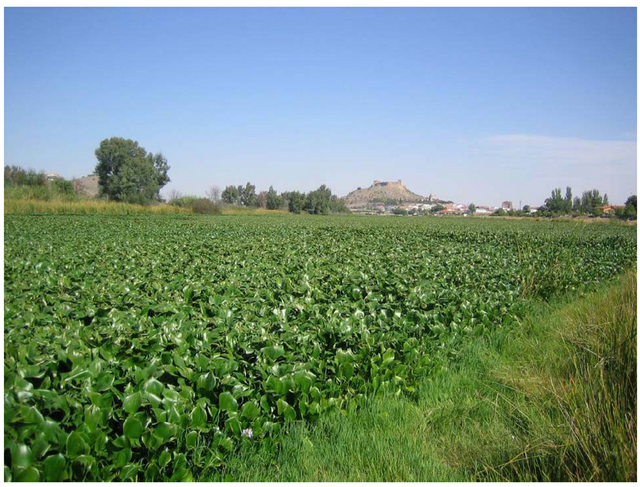
source: Confederation Hidrografica del Guadiana 2012
Guadiana river
Guadiana river is the fourth-longest rivers in the Iberian Peninsula with a course that covers 810 kilometers of distance and that defines a long stretch of the Portugal-Spain border. Its hydrological basin extends over an area of approximately 66 800 square kilometers.
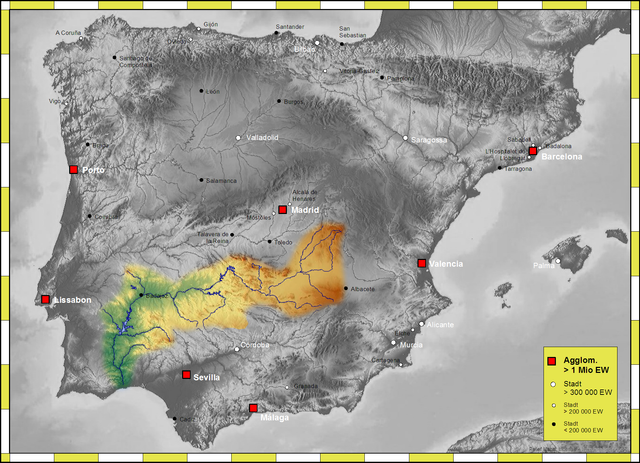
Water hyacinth (Eichhornia crassipes) has special characteristics that give rise to enormous amounts of biomass that cover the water surface interfering with the use and management of water resources.
Here's a resume of my last post:

What happened in the Guadiana river?
I will resume the story to a short list of events:
Autumn of 2004: first detection of the water hyacinth, and removal near Medelín;
Summer of 2005: in April there occurred a strong regeneration of the fragments that had been left on the banks;
October - November of 2005: it occupied approximately 200 ha, covering 75 km of river (the equivalent to 175 000 Tons of biomass);
2006: 183.000 tons were removed manually and mechanically
2010: 5,53 tons were removed
2011: 40.000 tons were removed
2012: > 51.000 tons were removed
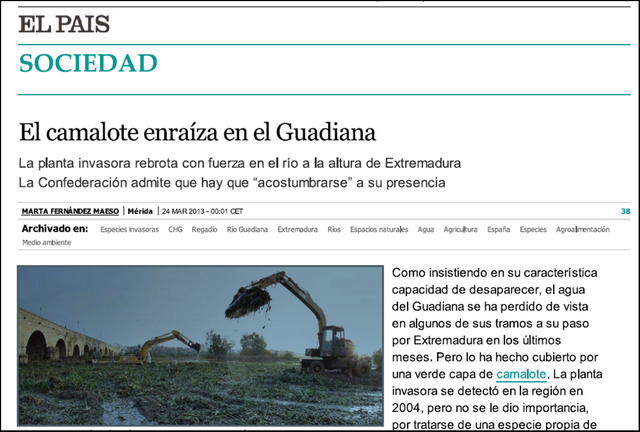
sourceAutumn 2013: When I visited Merida, there weren't evidence of water hyacinth
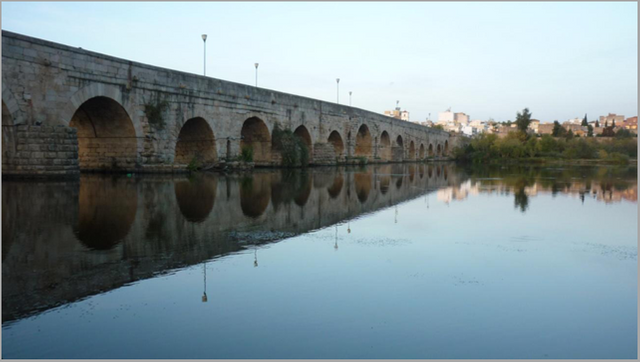
2015: it has been removed 825,94 tons/day
2016: it has been removed 170.000 tons (this quantity has only been exceeded in 2006 where they removed up to 180,000 tons)
For the removal, it's been used machinery, barriers, and boats.
The images are very impressive!
In May I went to Badajoz city (close to the Portugal border) and found some water hyacinth individuals in the river. This means that the upstream floating barriers aren't enough to keep the invasive plant contained.
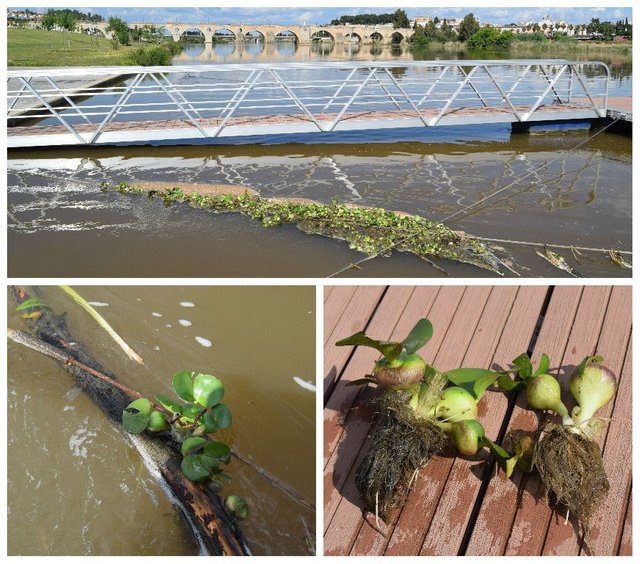
And they keep coming with the water flow...
More...there is another invasive species, yellow waterlily (Nymphaea mexicana).
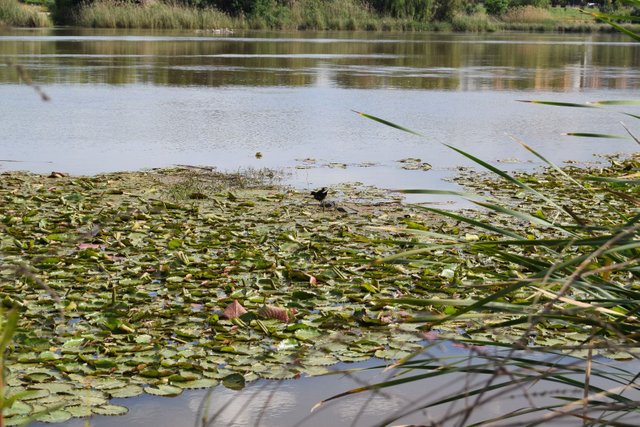
- 2017: it was signed a contract to reinforce the surveillance, early detection, and control of the invasive species (water hyacinth and yellow waterlily) in the Guadiana river between the Montijo dam and the border with Portugal.
Why?
Guadiana doesn't have limiting conditions for water hyacinth spread!
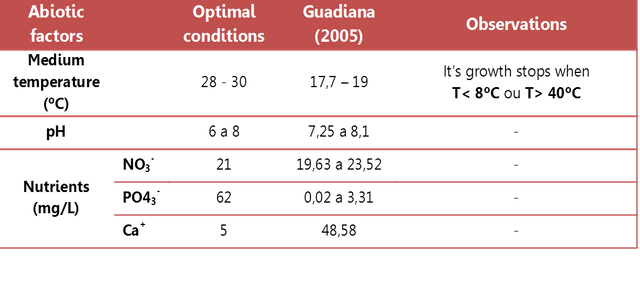
Téllez et. al (2008) produced a map of risk of invasion by water hyacinth
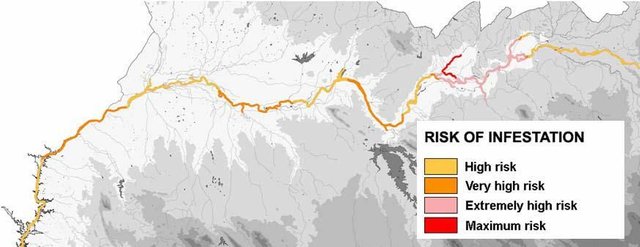
The most part of the Guadiana river is either at very high (orange) or high (yellow) levels of risk. It also reaches Alqueva reservoir on the left side of the map.
There are rumors that temporary workers hired for the water hyacinth removal also help on its spread because in that case work would last, like the money income. (I'm not sure about if it's real and sincerely I prefer to believe people wouldn't dare to do it).
The spread of water hyacinth is extremely difficult to manage.
It can cause biodiversity loss of aquatic ecosystems and affect economic development, human well-being, and huge amounts of money spent on its removal...
How much did it cost so far in Guadiana river?
In 10 years of control (2005-2015), it has been spent up to 26.000.000,00€ (26 millions of euros)!
It is really lots of money, and more will be spent in the next 7-8 years.
Some thoughts...
In the last years, we've seen water hyacinth expansion along the river, occupying areas that were free of invasion. Given the size of the potential area of distribution and the ability of the plant, it is foreseeable to expect major infestations if regular control is neglected.
The Alqueva Reservoir in Portugal, recently built, is the largest reservoir in Western Europe and can be seriously in danger.
The control actions must continue, and in my opinion control maintenance should last at least for 15-20 years. Actions of ecological recovery of the river should be done too.
In order to help this cause I will try to participate in volunteer controlling actions.
I would like to ask your help too:
Please, when you travel don't bring plants or animal as souvenirs!
Let them be in its natural environment.
Other sources:1
If you're interested in invasive species subject you would probably like to see my previous posts:
- Human influence on invasive species
- Introduced species that became invasive
- Water hyacinth - An invasive beauty all over the world - Photos from Portugal
I am a Conservation Biologist studying invasive plants. For this post I wanted to share the situation of invasion by water hyacinth of the Guadiana river, the fourth-longest in the Iberian Peninsula. Water hyacinth is one the most problematic aquatic invasive species, and Spain (soon it will be Portugal) is facing huge problems in the last 11 years. Let me know if you have similar situations in your countries, with this or other invasive species.
We have similar hyacinth invasion problems in South African dams and waterways
Do you know what's beeing done? I know about a control program with Acacia longifolia in South Africa about 20 years (I think).
To much corruption these days for anything meaningful to be done these days...
That's a pitty :(
Nice post! Very interesting :) it's wild just how much of this invasive species grows. I guess that is what happens with no natural preditor.
Yes, it can double every 5 to 11–15 days under suitable conditions! That is the problem, the absense of natural enemies.